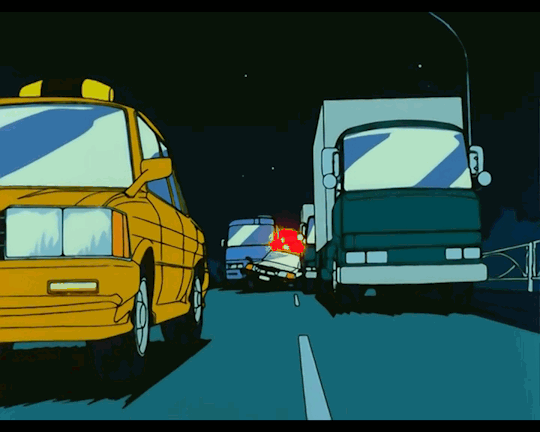#new dream hunter rem
Text
New Dream Hunter Rem: Yume no Kishitachi (1990)



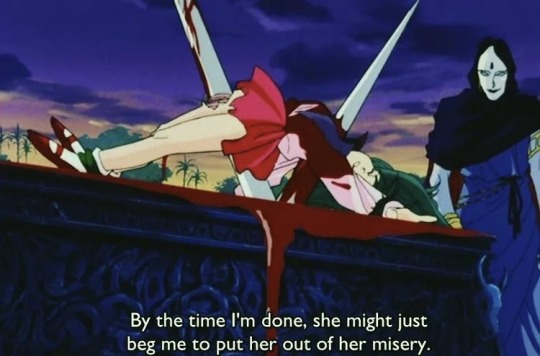

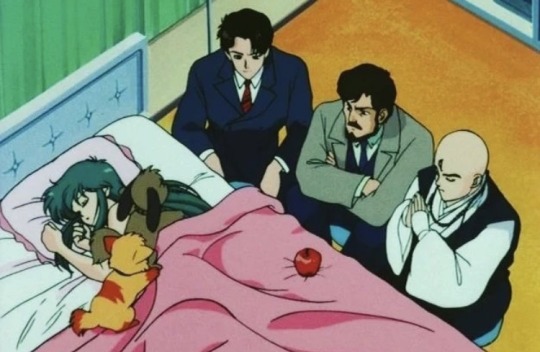
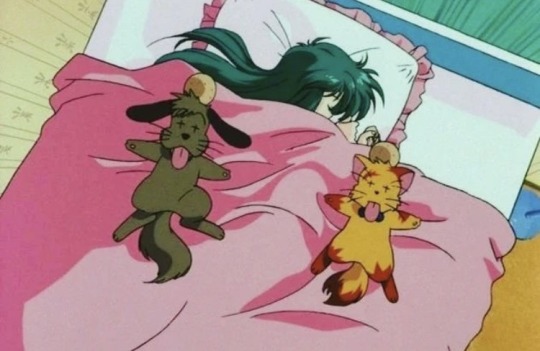
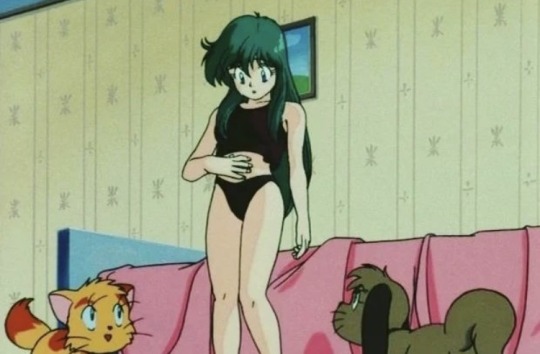
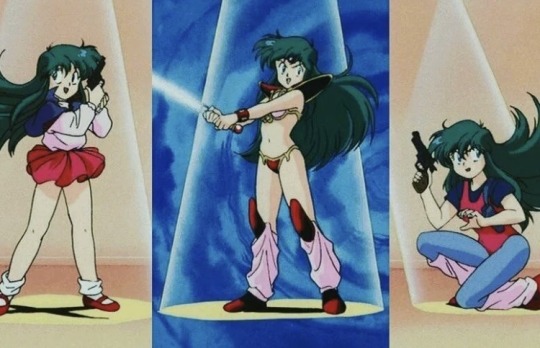
#new dream hunter rem#yume no kishitachi#anime#retro anime#classic anime#90s anime#anime frames#anime screencaps#cartoongasm#cartoon frames#cartoons#cartoon screencaps
27 notes
·
View notes
Text
["Alpha & Beta's March"] - New Dream Hunter Rem - Duet
#dream hunter rem#new dream hunter rem#naoki tatsuta#hayami shou#miyuki sanae#image song#duet#mascot month
2 notes
·
View notes
Text
Babylon Rises
What Comes Before-An Introduction
Sleep had never been Nesta's friend.
Lavender oil, chamomile tea, yoga, melatonin- pretty promises that she'd land within the Sandman's grasp. Like the desperate do she tried them all and watched them fail. Her new nightime routine a pilates princess' wet dream, mood lighting and steaming mugs of flower water and the gentle stretching of aching muscles, was aesthetically pleasing and utterly useless.
***
In her youth it had seemed like a superpower.
She did not bow to the night.
Her resistance to rest had been useful when cramming for finals, turning pages in the wee hours in the Aberaes wing, Redbull night shakes entirely unnecessary. It had carried her through college and the early trials of corporate law.
In those hazy days of young adulthood, dancing to club music into the wee hours, glitter dusting her skin and coke her nose, it felt like being invincible. Frenzied messy fucking one hour, dabbing Velvet Teddy on her lips on the corporate commute the next.
Stilettos sharp, mind sharper- Nesta fucking Archeron.
***
But as 35 came and went, marked by middling sushi and excellent company, the creeping fear began.
"You know Nes, averaging 2 hours sleep isn't healthy for you."
Gwyn was in doctor mode, from the worried tilt of her fine brows to her crossed arms as she leaned across the glass table, her matcha pushed to the side.
"Yeah I know. I know. I'm on it, I swear G, just don't tell Em."
"Don't tell Em what?"
The familiar voice floated from somewhere behind her.
Fuck.
***
Nesta eyed her double shot macchiato and wondered for a brief hopeful moment if she could drown herself in it, before turning guiltily to meet her friend's hard stare.
"The tea you gave me didn't work."
"Well shit, Archeron. That should have cleared any grade 5 spirits. What the fuck is clinging to you?"
Emerie shook her head, waves of ebony curls writhing in shared disbelief.
Claiming a seat beside Gwyn, her friend pursed her blue-stained lips in a familiarly threatening way and Nesta found the celebration rapidly descending into an inquisition.
***
The grilling was nothing new.
The same roladex of suspects was resurrected each time- stress, diets, spirits. Each had their favourite.
Gwyn, doctor and yogi claimed it was stress. Her friend, a research fiend, sent links to Pubmed every second day on the hormonal and immunological consequences of stress. In a way that, ironically, did little but exacerbate the pressure she felt.
Nesta hoped for diet, lived in faith that eliminating some carb or nightshade or sugar would bring her the peace of a full REM cycle. And if she dropped from a size 14 to an 8 in the process, then maybe Elain would stop sending her emails about spin classes in that passively bitchy way of hers.
Emerie's theory was the strangest by a mile.
"I'm telling you Nes, with all due respects to any of Berdara's papers this problem is one on the spiritual plane."
The demon-hunter raised an ornately manicured hand as Gwyn opened her mouth.
"Before you start, I don't doubt for a second Archeron could do with taking that stick out of her ass, Berdara."
Gwyn settled back in her seat as Nesta huffed indignantly.
"Whatever this is, it has serious mojo. I'm getting worried, the Illyrian dream traps I've placed around your room are filling far too quickly."
"We live in a haunted house Em, that's not exactly surprising."
Nesta retorted, her eyes tightening as the familiar pulsing in her temples that preceded her routine migraines began.
Today was not going as planned.
"I know the girl who became a mere believer a decade ago isn't lecturing me. I am a hunter Archeron and this isn't my first rodeo."
Emerie's eyebrows raised in challenge.
"I'm not. Definitely not. But Em, like you said I'm just a believer, and only that because I know you. I've no affiliation to the Other. It seems more likely it could be dairy, I was..'
Gwyn's sigh caused the pretty waitress to glance up from her physics textbook at the counter, before returning to her work following Nesta's bashful wave.
"I cannot listen to the potential dastardly powers of brie again, Nesta. That is well trodden ground. Let the rodeo queen continue."
Emerie flipped the redhead the bird before continuing.
"The Others are less concerned with bothering the Unseeing than we are topside. So it doesn't matter that you can't See. They don't exactly mind their manners or well, I'd be shit out of a job. Lucky for you, I happen to be very good at said job."
Pausing, Em reached into the chest pocket of her favourite leather trench, before pulling out an egg sized red jewel with a look of sheer triumph.
"Is that a ruby?"
Gwyn gasped.
Emerie scoffed before muttering dryly.
"Easy to stay humble with you two. "
"This is no mere ruby. This, my idiots, is an Illyrian protection stone. A rumoured fable, I hold the first found in three centuries reportedly."
"By you?"
"Yes by me, Archeron."
Emerie harrumphed.
"You could sound slightly less skeptical especially considering it's for you."
With that Emerie stretched her tattooed palm across the table and dropped the stone in Nesta's palm.
With a lupine smile she added.
"Go buy me another Americano and I'll tell you how I've saved your life. Add a shot of caramel, it's the least you can do for your saviour Nessie."
***
In the sticky blackness of the Other Cassian awakened and mountains moved. With the crack of his wings the promise of war grew ripe in the air.
In his slumber much had changed.
Babylon had fallen. Like him.
But she had found him.
His mate.
And so, like the tide he would rise.
And find his way to her.
36 notes
·
View notes
Text
WIP Game…
RULES: make a new post with the names of all the files in your WIP folder, regardless of how non-descriptive or ridiculous. Let people send you an ask with the title that most intrigues them, and then post a little snippet or tell them something about it! and then tag as many people as you have WIPs.
@loudlooks tagged me. I spent more time than I probably should have going through these to even remember what some of them are, and this is not the full list but only those that I actually kind of feel like I could talk about in some capacity. bear in mind that not all of these are tiva at this point although that's still the majority. also some of these are like from 2010 so uh.
Folders (Multichapter that have an outline and at least 1 chapter started):
Actors AU (Untitled)
Choices
Ever After (Temp Title)
Fake Marriage
FireStorm
History Repeats Itself
Ravenous (Honeymoon Fic)
Stay
Travel
Western AU
Standalone Docs:
1 Year
after all
All Too Real
berlin smut
DiNozzo David
dreams
Enterprise
ghost hunters au
Hockey
idk what this is
Illegal Entry
moo
New Leon Retires AU
nyc au outline
ouat crossover outline
pizza place
pr0n
random dialogue turn this into smoething
Random Encounter
rem dom
Rift2
SALVAGE Four Moments
SALVAGE Hands
SALVAGE Run To You
Snowmageddon
soulmates angst
There Was a Time
Too Quiet
tornader
Vacation Request part 2
violin
what if
ww au
i don't even know this many people to tag, especially since most of the writers i know have already been tagged lol. but if you're not on here? please feel free to do this.
#tag game#lord idk if i am ready for this but here we go#also i promise i am going to do the other wip tag games#wip tag game
2 notes
·
View notes
Text
Indie Roleplaying in Japan
Independent RPGs are a vital, vibrant part of the Japan's tabletop scene, both a movement in their own right and a talent incubator for publishers on the prowl for the next big thing. That said, this prominence is a relatively recent shift: during the boom years of Japanese roleplaying, indie titles existed on the margins of the market, produced by die-hards for die-hards. It would take the near-death and resurrection of the tabletop industry - and several decades of persistence - for these creators to finally get their due.
The Fandom Factor
Like most independent RPG scenes, Japan’s indie output is split into original and derivative works. This in itself isn’t especially noteworthy: after all, a good chunk of the global small-press market is dominated by third-party releases for existing systems, ranging from mainstream juggernauts like Dungeons & Dragons to cult faves like Mörk Börg or Mothership.
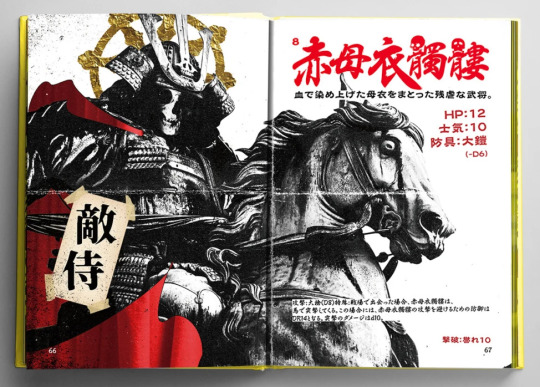
Such as 2022′s Nobunaga's Black Castle, Japan’s first venture into the realms of black metal fantasy.
What is notewothy is how the Japanese RPG scene has dealt with derivative products - especially the unauthorized ones.
In the West, piggybacking on an established system or property has always been fraught with a certain amount of legal peril. The ‘80s and '90s in particular saw an assortment of dust-ups between big-name publishers like TSR and Palladium Books and smaller creators - particularly fansites - over both actual and imagined IP violations. Things shifted significantly with the introduction of the D&D Open Game License (OGL) in 2000, which allowed third parties to produce D&D-related content without having to pay fees or royalties. However, these products still had to adhere to an explicit set of guidelines - one that could force an incautious company to pulp an entire print run of books.
By contrast, Japan’s rights holders historically didn't fuss much over derivative works, even ones sold for money, unless the infringement was particularly egregious. This resulted in the creation of a massive gray market of for-profit fanworks that has grown to annual sales in the region of US$800M - a not-inconsiderable chunk of Japanese otaku spending. Semi-protected as “parodies” in the eyes of the Japanese law, these products take various popular or nostalgic IPs and spin them off into new directions - respectful, comedic, pornographic, and everything in between.
While the overwhelming majority of for-profit fanworks are comics or comic-adjacent material like artbooks, RPGs also carved out a niche in this market through unofficial supplements, adventures, and even entire roleplaying systems. Largely unconstrained by legal worries, Japanese tabletop fans could produce IP-infringing double whammies like 1993′s Dark Kingdom: a thoroughly unlicensed sourcebook that imports the cast of pop culture evergreen Sailor Moon into TORG, West End Games’ RPG of fractured realities.

Dark Kingdom was an early showcase for Jun'ichi Inoue (井上純一), who would later enjoy a fruitful career at FEAR creating notable titles like Tenra Bansho (天羅万象 ) and Alshard (アルシャード). [IMAGE: Dragoon_Shaytan via Twitter]
Over the years, other popular IPs inevitably also got the tabletop treatment, resulting in fan-made adaptations of everything from ’80s anime relic Dream Hunter Rem and classic shoot-’em-up R-Type to contemporary megahits like Fate/stay night and Bleach. Even today, it’s possible for a creator to knock out an RPG based on Dragon Quest - one of Japan’s largest and most prominent roleplaying franchises - and put it on a digital storefront for US$16 without immediate fear of a thermonuclear-level copyright strike.
However, until around 2010, these sorts of derivative works were more of a sideshow than anything else. That changed once Call of Cthulhu established itself as Japan’s best-selling RPG, buoyed by a series of popular - and irreverent - actual play videos and the Mythos-Goes-Harem antics of the Nyaruko: Crawling with Love media franchise. Suddenly, freshly-baked Cthulhu fans were appearing at gaming conventions in increasing numbers, resulting in a corresponding boom in fan-made CoC adventures and supplements.
As Call of Cthulhu grew to dominate the local tabletop industry, its fanworks cast an equally long shadow over the indie scene, eventually accounting for an estimated 80 to 90% of all derivative products on the market. This extreme popularity would have repercussions: in 2021, facing pressure from the game’s creators, Chaosium, CoC licensees Arclight joined forces with Japan’s most prominent RPG companies to create the Small Publisher Limited License (SPLL) program, which set content guidelines and royalty fee requirements for any third party publishing material for an established system. This was an unusual arrangement by Japanese standards, though one that also gave new legitimacy to derivative works within the roleplaying community.

As was the case with D&D, Call of Cthulhu’s rules have been used as a springboard into other game styles and genres. For instance, the Magic Academy CoC (魔法学校CoC) series reworks Chaosium’s system to accommodate Harry Potter-ish adventures.
An Interlude on Doujin Culture
Derivative works are just one facet of Japan’s indie RPGs, but an important one to start with - in large part because the impact of the Japanese fanwork scene extends much further than just Sailor TORG.
Thus far, when I’ve used the word “fanwork,” it’s been to refer to what the Japanese would formally call “doujinshi.” In the West, that term is intimately associated with fan comics, especially pornographic ones, but the word simply refers to any independently created and published print product - more specifically, one put out by a doujin (同人) or “circle” of like-minded individuals.
The doujinshi concept dates back to the 19th century, but only truly gained traction in the 1980s - a point where more affordable, accessible printing options made it possible for enterprising hobbyists to produce and sell comics as a full-on side gig. As the number of indie creators grew, events emerged to give these artists and writers a venue to market their wares - chiefly Comic Market, which began as a modest volunteer-run show in 1975 but would eventually grow into the world’s largest comics event by a significant margin.
As the doujinshi market grew in size and scope, a new generation of printing companies emerged to serve this subculture through cheap, high-quality digital printing and low minimum order quantities. This further reduced barriers to entry, giving even amateur artists access to professionally bound products at an manageable price.
This ecosystem of affordable production and dedicated sales events created a vital foundation for Japan’s indie roleplaying groups - and a sorely needed one, as up until the mid-‘90s, the cost and complication of producing RPG products kept independent releases relatively scarce. As a result, early offerings like Bläde & Wörd (ブレード アンド ワード), ITHA WEN Ua ( イサー・ウェン=アー), and Small Still Voice (スモール・スティル・ボイス) played it safe by skewing toward orthodox Western-style fantasy - and largely sank in the market with scarcely a ripple.
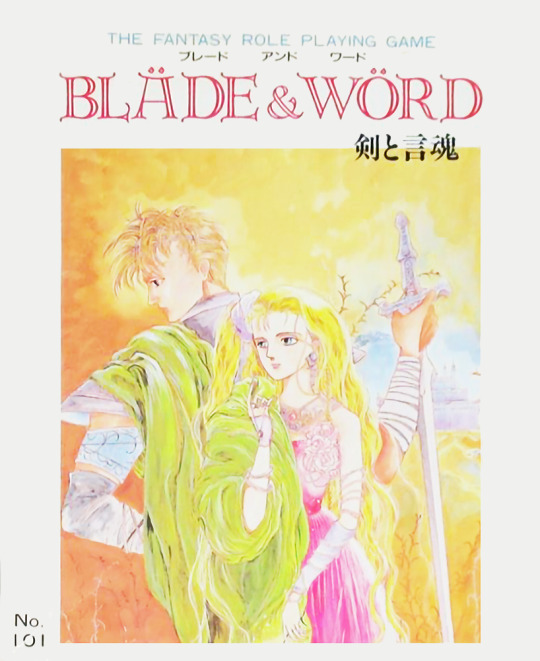
Thanks to its multifaceted magic system, 1991′s Bläde & Wörd enjoyed somewhat more longevity than its fellows, eventually spawning a second edition under the somewhat unlikely title of “Acoustic Leaf“ (ブレード アンド ワード) in 1995.
The ability to source cheaper, better-looking books at lower order quantities arguably helped RPG creators shake loose some of this conservatism - perhaps best exemplified by 1996′s Karma Saturday Night Special, later known by the shorter, punchier alias “Satasupe” (サタスペ). Set in an alternate history where the United States did not enter World War II and a nuke-ravaged Japan found itself divvied up by various superpowers, this gangster RPG dunks its players into a gonzo stew of Soviet narcotics farmers, voodoo practitioners, Japanophile mercenaries, biking Crusaders, criminal animal handlers, UFO cultists, and more besides.
Satasupe’s creators, “Jail House,” started off as a loose-knit collective with almost a dozen credited members, building up their audience and reputation over several years before striking paydirt with 1999′s SATASUPE Remix99 (サタスペ・リミックス99). Remix99 would prove popular enough to attract attention from the wider industry, and in 2003, a revised and expanded version called Satasupe REmix+ ( サタスペ・リミックス+) earned a release through Hobby Base, the publishing arm of the game store chain Yellow Submarine.
To clean the game up for its commercial debut, Jail House partnered with Adventure Planning Service, one of Japan’s oldest RPG design companies. The collaboration proved so fruitful that Jail House was effectively absorbed by APS, and Satasupe’s lead designer, Toichiro Kawashima (河嶋陶一朗), would quickly become one of the company’s most important creators, spearheading future hits like Labyrinth Kingdom (迷宮キングダム) and the now-ubiquitous Saikoro Fiction line.
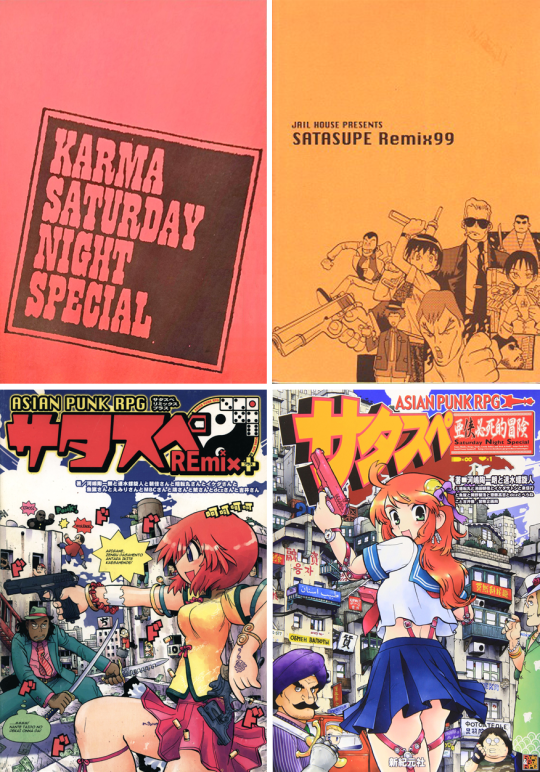
The evolution - and professionalization - of Satasupe’s rulebooks doubles as a mini-history of Japanese indie roleplaying as a whole.
A Rising Tide Lifts All Boats
On the whole, the early 2000s were a transformative time for independent roleplaying. In the West, the third edition of Dungeons & Dragons made its debut alongside the Open Game License, which unleashed a new generation of hobbyists and small publishers eager to capitalize on the excitement generated by D&D’s first major new edition in 11 years. Around the same time, independent RPG creators also began establishing their own distinctive culture and philosophy, driven by influential online discussion forums like The Forge. And behind the scenes, indie creators of all stripes benefitted from the growing availability of sophisticated desktop publishing software, which continuously narrowed the aesthetic quality gap between “amateur” and “professional” games.
In Japan, the OGL attracted significantly less direct interest, though it would eventually inspire comparable “open-source” systems like FEAR’s Standard RPG System (SRS) and Adventure Planning Bureau’s Saikoro Fiction. A more notable development was the introduction of FEAR’s Game Field Awards in 2000, which allowed aspiring designers to submit board, card, and roleplaying games to the company for potential commercial publication. This proved to be an important new outlet for independent creators, and helped birth notable titles like 2005′s TORG-inspired Chaos Flare (異界戦記カオスフレア) and 2001′s Double Cross (ダブルクロス), which is credited with helping to establish the more systematized approach used by modern Japanese RPGs.
2000 also saw the debut of Game Market - or “Gema” for short - a twice-a-year event that positioned itself as a Comic Market equivalent for analog hobbies. Though Gema’s foot traffic was only a fraction of its role model’s, the show would gradually establish itself as a go-to for unveiling new RPGs, especially once stewardship of the event passed to Call of Cthulhu licensee Arclight in 2010.
2010, in fact, seems to be generally regarded as the true starting point for Japan’s modern indie RPG scene - thanks again to the CoC craze, which not only produced a mountain of derivative products, but dramatically changed the size and demographics of Japan’s roleplaying fandom by drawing in both younger gamers and female players. This expanded audience appears to have to encouraged a greater diversity in game design and themes - less anime-inspired power fantasy, more high-concept exercises like “what if the players were actors in a movie production scrambling to finish shooting with no script and no budget before the whole project implodes?”

2012′s Reading! Manga Lord (爆走!まんが道) and 2013′s Idol Box! (どるばこ!) exemplify the indie scene’s broader swing towards less traditional RPG topics after 2010.
Surprisingly, some of this mindset even spilled over to Japan’s two biggest RPG publishers, Kadokawa and Shinkigensha - as evidenced by the fact that Satasupe received a mass-market release through the latter in 2008, eventually followed by other oddballs like the youth band RPG Strato Shout (ストラトシャウト) and Mofumofu Stream (もふもふストリーム), a game about YouTubers fighting crime with their psychic pets.
A final notable development in the indie scene was the emergence of online storefronts for independent RPG releases. While digital publishing has slowly become more prominent in the Japanese tabletop market, physical copies still dominate the indie space and groups invariably end their events with unsold game stock that needs to be offloaded elsewhere. The launch of Cokage in 2014, followed by Conos in 2016, provided an important outlet for excess copies and doubled as a means of making small-press games accessible to fans in rural areas who wouldn’t normally be able to attend a sales event.
Notable Creators
There’s an enormous quantity of indie circles currently active in the tabletop space, with more joining the fray on a monthly basis. A comprehensive list of every group is a bit beyond the scope of this post, but let’s take a quick look at a few of the longer-running ones:
Draconian: Originally a partnership between system designer Fuyu Takisato (瀧里フユ) and worldbuilder Shio Botan (潮牡丹, AKA Darya Tide), Draconian began publishing in 2014, gradually taking on more members to become a five-person operation capable of releasing multiple games per year. In 2018, the group officially crossed over into mainstream publishing with Silver Sword: Stellar Knights (銀剣のステラナイツ), a two-player RPG distributed by Kadokawa. Since then, the circle has put out several more titles through both Kadokawa and Shinkigensha while continuing to self-publish its more experimental work.
Draconian’s titles tend to focus on questions of identity, reality, and relationships with others, typically in fantastical or post-apocalyptic settings. Its more combat-intensive games share a battle system known as Diaclock, which was made openly available for use by other creators in 2020.
youtube
In recent years, Kadokawa have begun experimenting with promotional trailers for their RPG releases - in this case for Stellar Knights.
Phantasm Space: Founded in 2014, Phantasm Space is responsible for the steampunk aerial exploration game Skynauts (歯車の塔の探空士<スカイノーツ>), the Porco Rosso-inspired Il Paradiso Celeste dei Cacciatori Extro (チェレステ色のパラディーゾ), pastoral fantasy title Floria: The Verdant Way (翠緑のフローリア), and the comedic Villain’s Quest (ヴィランズクエスト). All four games have a lighter tone and showcase unusual ideas and mechanics; Villain’s Quest, for instance, throws its anti-heroes into pitched strategy meetings where participants use cards to advance various proposals; eventually, things climax in an analog tower defense game as the players scramble to protect their evil master from being slain once more.
The circle’s leader, Lord Phantasm, went pro in 2020 by joining Adventure Planning Service under the pen name Eisuke Nanashi (中西詠介). In 2021, Nanashi and APS published a revised version of Skynauts through Kadokawa. That same year, Floria also received an English-language translation courtesy of Silver Vine Publishing.
youtube
Another Kadokawa trailer, this time for the 2021 edition of Skynauts.
Rommel Games: Though Rommel Games began publishing RPGs in 2013, the group’s big breakthrough would come the following year with Galaco and the Tower of the Broken World (ガラコと破界の塔), a mecha dungeon crawler set on a distant planet. The game’s slick, commercial-level production values made an immediate splash in the RPG scene, and a number of indie creators readily credit Galaco as an influence on their own work.
In 2017, Kadokawa picked up the circle’s fast-paced superhero title Deadline Heroes (デッドラインヒーローズ), which was followed by a villain-focused version entitled Black Jacket (ブラックジャケット) in 2019. The line’s success may be attributed in part to the buzzy My Hero Academia franchise, which made its anime debut in 2016 and continues to enjoy a dedicated following in Japan.
--
New Game Plus: This collective of young game designers has maintained a healthy and eclectic output since first appearing on the scene in 2018, with titles that include Night Butterfly ( ナイトバタフライ ), an RPG about male nightclub hosts, and the aforementioned Mofumofu Stream.
Calling NGP an indie circle may be a bit of a stretch - the majority of its titles have in fact been released through Shinkigensha - but the group does put out the occasional doujin game. Sadly, its founder, former Group SNE associate Rikizo (力造), passed away from pancreatic cancer in 2020.
--
Shiawase Training Ground: Formed by systems engineer Go Yamauchi (山内剛), Shiawase Training Ground has been actively releasing material since 2014, producing offbeat titles like the medieval peasant survival sim Hoshikuzu Village Story (ホシクズ村々物語) and restaurant-focused A La Cuisine (アーレ・キュイジーヌ). Yamauchi’s upcoming “travel and escape” RPG We Will Happiness! (ウィーウィル・ハピネス!) has reportedly ended up with Adventure Planning Service, suggesting his mainstream breakthrough may be just around the corner.
2 notes
·
View notes
Text
I've watched the Jujutsu kaisen series and I'm currently watching the movie. Now I'm torn between finding something new or rewatching stuff. Series I've already seen and considering a rewatch are:
Dream Hunter Rem
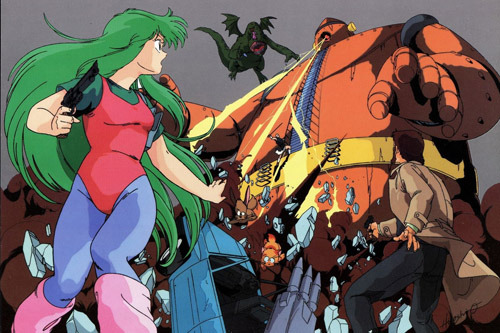
Mermaid Saga
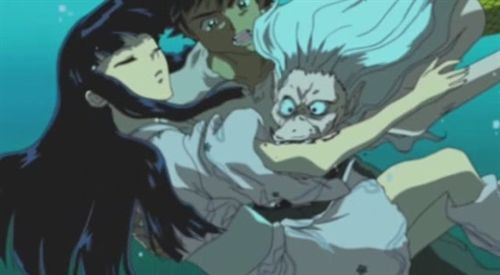
Jigoku Shoujo/Hellgirl

1 note
·
View note
Text
Some Interesting Facts About Human Body
Our bodies contain a ton of insider facts. For example, you might have contemplated why individuals hiccup or the number of mosquitoes it that takes for one individual's blood to be consumed. There is logical help for large numbers of these odd body realities.
Your hands, wrists, feet, and lower legs contain the greater part of your bones. Your body makes 25 million new cells consistently. As such, you will have created a larger number of cells in 15 seconds than there are Americans. The femur, generally alluded to as the thigh bone, is the greatest bone in the human body.
Take a gander at you; there are numerous logical miracles on the planet. There are numerous things to be in amazement of, going from the nuclear parts of life to the furthest reaches of room. The rundown currently incorporates your body.
To be sure, the human body is an exceptional organic entity.
We should see the Facts about our Bodies.
1. The surface region of a grown-up's lungs is around 70 square meters.
2. Your left and right lungs vary somewhat from each other. While the lung on your right half of the body is parted into three curves, the lung to your left side is separated into two curves. To make the heart encompassing, the left lung is somewhat more modest.
3. Fingernails develop all the more rapidly in light of the fact that they are presented to daylight all the more habitually. The center finger generally has the longest nail, and the nails on your functioning hand develop more rapidly than those on your non-working hand. Moreover, nobody knows why, however the more extended the finger's nails, the greater the finger.
4. In one of the prior however more careful examinations, detailed in a 1985 issue of the Journal of Applied Physiology, scientists utilized attractive reverberation imaging to assess skeletal bulk and circulation in an example of 468 people. As per the review, men had substantially more bulk, and the orientation hole was particularly unmistakable in the chest area.
5. Every day, the typical human breathes in around 11,000 liters of air.
6. Throughout your whole life, your nose and ears keep on extending.
7. Over one-fourth of the human body's oxygen goes to the mind.
8. Your heart will pulsate with the music as you pay attention to it.
9. The human body contains sufficient blood courses to adjust the planet multiple times assuming they were undeniably stopped end.
10. The skeletal framework incorporates teeth. In any case, they are not respected to be genuine bones.
11. Rapid eye development (REM) rest is a phase of rest that exists in people (REM). REM rest, which represents around 25% of absolute rest time, is every now and again when the most distinctive dreams happen.
12. Our predecessors' hair would stand up when they created goose pimples, causing them to appear to be more hazardous to hunters.
13. The normal individual's body has sufficient fat to create seven bars of cleanser.
14. Your body is comprised of water, around 60%.
15. The normal human produces sufficient spit to fill two pools in a lifetime.
We trust all have appreciated perusing the Human Body realities. Sound Life Human is an expert Blogging Website. The intention is to instruct the wellbeing related issues. Assuming you are confronting Fatty Liver Disease can visit to find out about the side effects, Stages, Diagnosis, and Treatment.
1 note
·
View note
Photo

“New Dream Hunter Rem” - December 16, 1990
12 notes
·
View notes
Photo
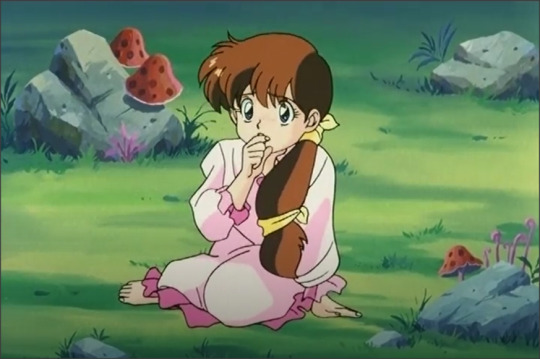

~The Lesser-Known Oddly-Specific Character Type of the Day is...~
Brown-Haired Girl in Pink Pajamas Who Has a Mysterious Link to the Titular Character of the Work
9 notes
·
View notes
Photo
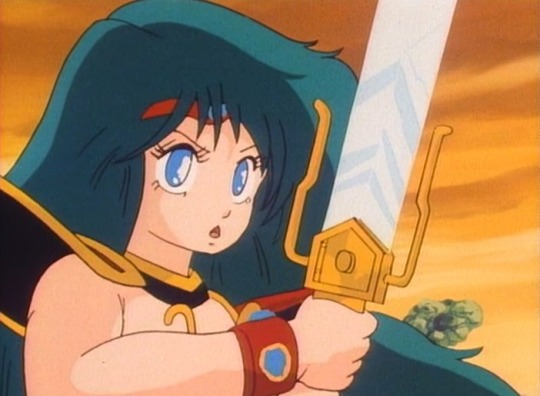
Dream Hunter Rem
Genre : mystic, ecchi, adventure, horror, maho-shojo, magical girl
Category : OVA
Episodes : (Adults Only Version) 22 min, 4 duration 20 min, (New Dream Hunter Rem: Yume no Kishi-tachi) 40 min, (New Dream Hunter Rem: Massacre in the Phantasmic Labyrinth) 50 min
#Dream Hunter Rem#new dream hunter rem#New Dream Hunter Rem: Massacre in the Phantasmic Labyrinth#Massacre in the Phantasmic Labyrinth#Satsuriku no Mugen Meikyuu#anime#retro anime#anime ova#anime 80s#anime 90s#anime adventure#anime mystic#anime horror#maho-shojo#magical girl
9 notes
·
View notes
Photo
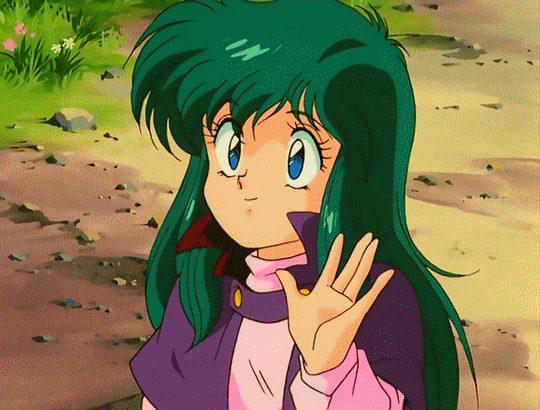
365 notes
·
View notes
Photo

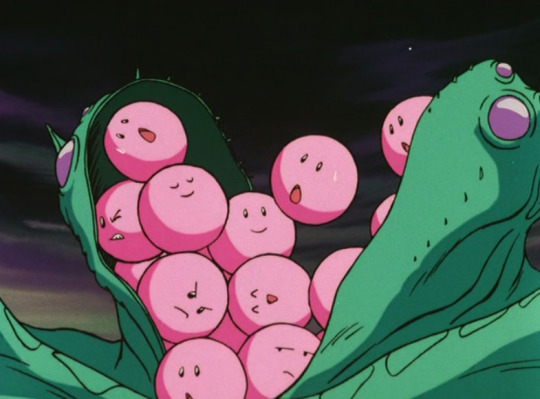
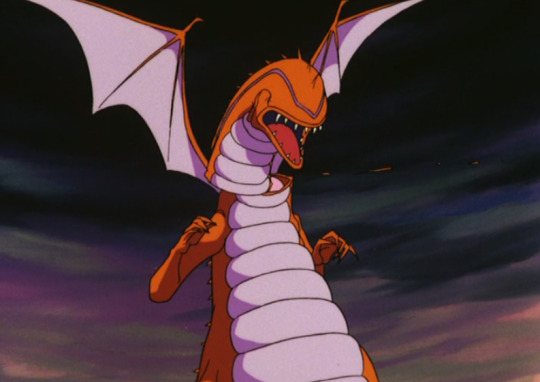

Schwing, slash (I wish I had something to make GIFs)
New Dream Hunter Rem, 1990
4 notes
·
View notes
Text
Gorgeous Irene
We're getting into the 1980s here at Mahou no Manga, which is perhaps one of the most important decades in the history of the magical girl genre. So before I start talking about the manga du jour, I first want to unpack what made the 80s so, dare I say, transformative.
The 1980s were a time of great change for the magical girl genre, and these changes were being felt across a variety of media. Starting with anime, Mahou Shoujo Lalabel finished airing in 1981. The anime was produced by Toei Animation, an animation and planning company that had also created nearly every other magical girl anime in existence at that time (the sole exception being 1971's Fushigi na Melmo, animated instead by Tezuka productions). Once Lalabel ended, Toei took an approximately decade long break from releasing new magical girl anime. 1982's Magical Princess Minky Momo (handled by Ashi Productions) would be only the second ever non-Toei magical girl anime. Following its' success, numerous other studios, mangaka, and other content creators of the time would put their own spin on the magical girl formula, which dramatically expanded the scope of what a magical girl can be and do. As such, this is the point where we start to see the consensus as to which titles are considered magical girl and which are not break down. Is Spoon Oba-san a magical girl anime? What about Vampire Princess Miyu? Who knows?
Key innovations of this time include the creation and popularization of the magical idol sub-genre thanks to 1983's Magical Angel Creamy Mami, Studio Pierrot crossing over their magical girls in 1987 (or 1986 depending on how you look at it) to create what is likely the first ever magical girl team in anime, and a small handful of male-oriented magical girl OVAs being released to the newly booming direct-to-video market. That last point is particularly interesting to me because prior to the eighties, magical girls designed for boys and men were a rarity. 1973's Cutie Honey was the first magical girl series intended for a male demographic in both anime and manga, but despite its' success, it was essentially a one-off. While male-aimed magical girls still weren't super common in the eighties, they were slowly growing in number. Similarly, two of these OVAs (Dream Hunter Rem and Genmu Senki Leda, both released in 1985) are early examples of magical girl warrior anime. While neither would be hugely influential on their own, they are a stepping stone on the path to magical warriors being the most common kind of magical girl.
As well, the late eighties saw both magical girl anime from the 60s get rebooted. Himitsu no Akko-chan was brought back as a live action TV special in 1987, and a TV anime series retelling the story of the original in 1988. Sally the Witch would get a direct sequel series in the form of a TV anime in 1989. These weren't the first magical girl reboots (There was a new Comet-san TV drama in the 70s that I think is technically the first), but they are emblematic of the nostalgia cycle starting to apply to magical girl anime, something we are still seeing to this day with works like Sailor Moon Eternal and Tokyo Mew Mew New.
The eighties are also when magical girls would globalize at an unprecedented rate. Existing Japanese magical girl shows were exported to numerous foreign markets during this time, mostly in Europe and South America, with foreign language dubs being created for these properties, including some of the first English dubbed magical girl anime. The first magical girl anime to receive an English dub was 1979's Hana no Ko Lunlun, a few episodes of which were edited together into a TV movie that aired in 1981 under the unhelpfully generic title of Angel.
Meanwhile, original English language magical girl cartoons were being created in greater numbers than before. American cartoons of the 80s are known for toy tie-in cartoons, and so doll lines like Jem, Rainbow Brite, and the original She-ra were adapted to screen. Notably, these 80s magical girl cartoons generally did not derive influence from existing magical girl anime. Rather they developed on their own, often repurposing existing fantasy and fairy tale tropes to be more female centric and magic intensive.
And then there's manga. During the 1980s, magical girl manga would undergo two major changes, both of which essentially comport with changes in contemporaneous magical girl anime. First of all, this decade saw an uptick in shounen and seinen magical girl manga. Like I said, Cutie Honey was the first shounen magical girl manga, but because it has a very high-profile anime (or, y'know, five, who's counting?), it was not covered on the blog. As such, every manga we've looked at prior to now has been shoujo. But starting today, Mahou no Manga will be covering manga geared towards boys and men as well.
Secondly, this is the point at which we start seeing magical girl manga making its' way into English speaking fan communities. A handful of 80s magical girl manga have been translated by manga scanlating groups and at least one got an official English release in its' own time.
Both of these changes come together in the topic of today's post: the first shounen manga to get its' own write-up on this blog, and the first manga I've covered that has been translated in its' entirety.

Gorgeous Irene is a manga by Hirohiko Araki about a gorgeous assassin named Irene Rapona. Usually taking on the appearance of a strange and airheaded sixteen year old girl, Irene has an arsenal of magical makeup that can transform her into a sadistic woman with hypnotic abilities and an invincible body. Those who contract her must become her friends, and in exchange for their friendship, she will protect them from harm. She does battle with powerful enemies, using her makeup as a deadly weapon. Not only that, but she is a master of disguise who can blend in anywhere, or stand out as she sees fit.
As a magical girl story, this one is... certainly interesting. Given that it is quite short, we don't get much of a read on Irene's character, and most of her life story and motivations remain cloaked in mystery. Where she got her makeup and what the full extent of its' abilities are are never made fully clear. As well, her story is often told from the perspective of her clients until the moment she leaps into battle. The character drawing style is... distinctive let's say. Proportions and poses are what I can only describe as stylishly awkward. As for Irene herself, I actually like her quite a bit. She has a tenacity and charm to her that really carry the story in my opinion.
I will say that if you want to read this one for yourself, definitely know your own limits. Content warning for animal cruelty, graphic bloody violence, and body horror. The female characters, including Irene herself, are very much sexualized, so if you're not comfortable with that, this might be one to skip. As well, if you're squeamish about bugs, the final chapter is probably going to get to you.
Gorgeous Irene's publication history is a bit of a mess. Many online resources will tell you it was published from December 23, 1980 to December 20, 1986 (which is how this ended up being the first eighties manga on my timeline) and it ran for five chapters. These five chapters were published in a single tankobon volume on February 10, 1987, and every subsequent reprint has included all five chapters. However, Gorgeous Irene isn't the only thing here. In actuality, it only makes up the last two chapters, with the other three being assorted one-shots by Hirohiko Araki.
These additional stories are interesting in the own right, Especially Mahounen B.T. and Busou Poker. The former would go on to have a six chapter run of its' own, and a sequel one-shot published in 2021. As of this writing, I've only read the original one-shot. Although I have seen the title translated as Magical Boy B.T., it is not a magical boy manga and is instead a detective story in which the main character occasionally does sleight-of-hand magic tricks. Not to mention a more accurate translation would be Wicked Boy B.T. and the official English title is Cool Shock B.T.. Busou Poker (Poker Under Arms) is a wild west poker drama of sorts, which is not my cup of tea but does still boast some historical significance as Araki's debut work, published on, you guessed it, December 23, 1980.
Hirohiko Araki is best known as the creator Jojo's Bizarre Adventure. It would certainly be interesting to compare and contrast that manga with Gorgeous Irene, but alas I have not actually read or watched Jojo's Bizarre Adventure. I was tempted to try some for this project, but given the sheer amount of Jojo content that has been created, I didn't think I would be able to get a sufficient understanding of the series in a timely fashion. So if there are any JJBA stans among my readers, feel free to check out Gorgeous Irene and drop your observations in the reblogs.
Gorgeous Irene ran for two chapters in Weekly Shounen Jump, the first chapter published October 1, 1985, the second published December 20, 1986. Both chapters were published alongside the other short stories on February 10, 1987 with reprints on March 19, 2004, in October of 2007, and on December 16, 2012. Most recently, the manga received a digital rerelease on November 1, 2015. As far as I know, Gorgeous Irene has never been officially published in English. The good news is, Project Bite Me! Scanlations has released an English translation of all five chapters, making this arguably the most accessible manga I've covered on this blog, and its' tangential connection to Jojo's Bizarre Adventure makes it easily the most well-known manga I've covered. For once it wasn't a matter of trying to scrounge up enough information for a coherent write-up, but deciding what information was important enough to include vs. what to omit. Huge shout-out to Jojo's Bizarre Encyclopedia for having most of this information at-the-ready. If you want to know more about Gorgeous Irene, go check out their article on the subject.
While I certainly have my criticisms of this manga, it was an engaging read to say the least. I've never seen another magical girl story quite like it, and I think it makes for the perfect segue into a new era of manga in the genre.
#my posts#long post#Gorgeous Irene#ゴージャス★アイリン#Hirohiko Araki#荒木 飛呂彦#Shounen Jump#80s#shounen#In hindsight I probably should have been tagging the rest of my stuff as shoujo for posterity's sake.#I wonder if I should go back and tag everything retroactively.
47 notes
·
View notes
Photo
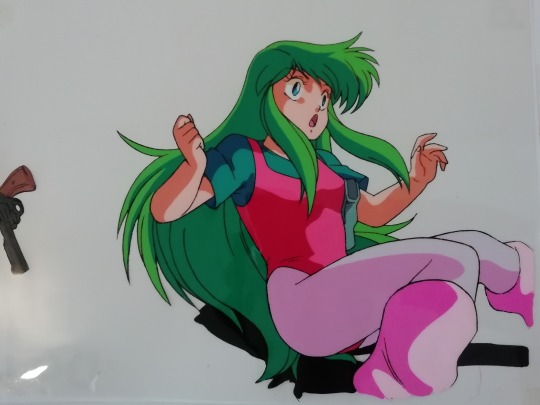
I bought a new anime cel! I saw this Dream Hunter Rem cell for sale, and I couldn't resist. Dream Hunter Rem is such a weird series of OVAs and I'm really glad I could snag a cell from it.
61 notes
·
View notes

